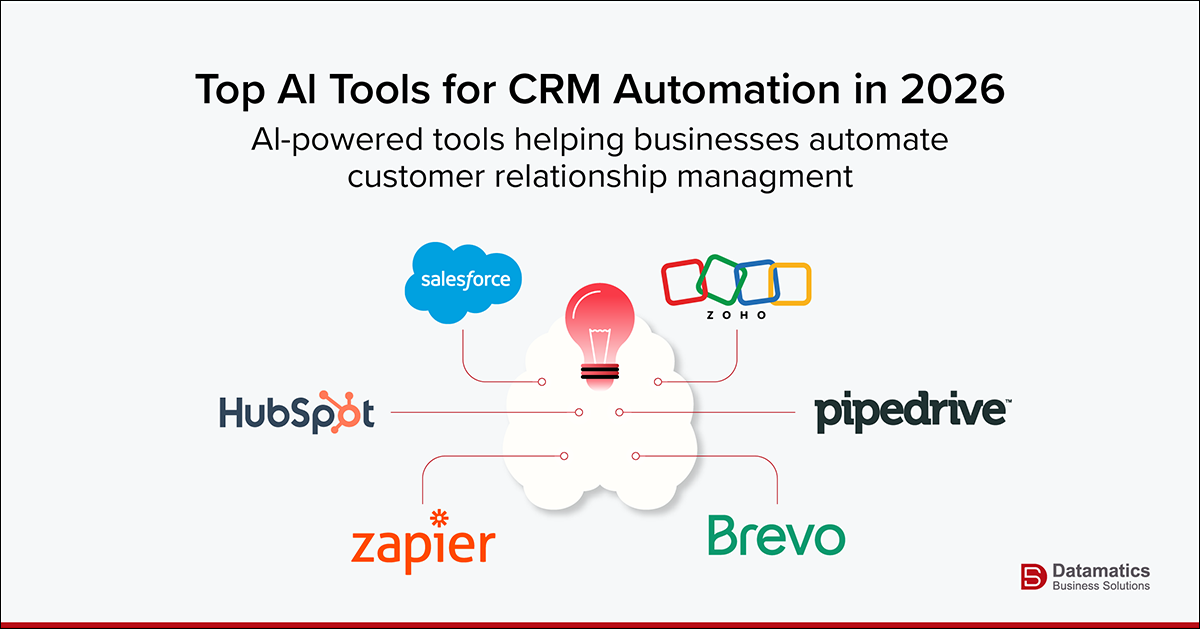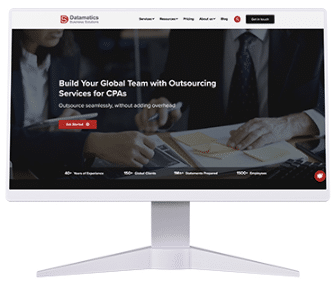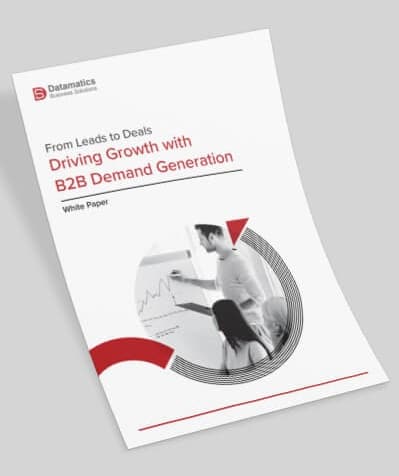B2B demand generation has changed fast in the past few years. Buyers spend less time talking to sales teams and more time researching on their own. According to Gartner, B2B buyers complete 83% of their journey before reaching out to a vendor
This shift has pushed companies to rethink how they attract, qualify, and convert leads. Buyers want to self-educate before engaging with sales, which changes how brands run demand programs.
AI has become a major force in this space. Companies are using AI to reach the right audience, run better campaigns, write content faster, and score leads with better accuracy. A report by PwC shows that AI can contribute $15.7 trillion to the global economy by 2030.
AI is not just a trend. It is a long-term business driver.
This blog explores the top AI tools that will shape B2B demand generation in 2026. Keep reading to find out more.
AI Tools Comparison Table for B2B Demand Generation (2026)
Tool | What It Does | Best Use Case | Who Benefits Most |
|---|---|---|---|
Jasper | Writes blogs, landing pages, ads, and emails with brand voice | Scaling content and social posts quickly | Marketing teams and content agencies |
Copy.ai | Short-form content, social captions, rewriting and repurposing | Fast creation of LinkedIn posts and email copy | Demand gen teams + SDR marketing |
ChatGPT | Long-form content, outlines, scripts, SEO-focused drafts | Research and thought leadership | B2B brands, SaaS, agencies |
Outreach.io | AI email sequencing and personalization | Improving email reply rates | SDRs and sales teams |
Leadfeeder | Tracks website visitors and company activity | Building ICP-based lead lists | B2B sales and ABM teams |
HubSpot (AI CRM) | Automates tasks, cleans data, scores leads, and sets reminders | CRM management + follow-ups | SMB + mid-market companies |
Salesforce Einstein | Predictive lead scoring and pipeline insights | Forecasting and deal prioritization | Enterprises with large CRMs |
6sense | Deep intent signals and account scoring
| ABM and enterprise demand gen | SaaS, IT, cybersecurity companies |
ZoomInfo | Company intelligence, technographics, buyer intent | Identifying in-market accounts | Sales and growth teams |
Apollo | Contact data + email automation | Prospecting at scale | SDR and outbound teams |
Intercom / Drift | Chatbots for lead capture and qualification | 24/7 website conversations | Companies with global traffic |
Mailchimp / Klaviyo | AI subject lines, automated emails, segmentation | Email nurture and drip campaigns | D2C + SMB + SaaS marketers |
Tableau / Power BI / GA4 | Analytics, pipeline insights, attribution | Measuring campaign performance | Marketing leaders + analysts |
1. AI for Content Creation and Personalization

Content continues to drive B2B demand generation. But it takes a significant amount of time to create quality content. Scaling blogs, whitepapers, landing pages, email copy, and social media postings is a common challenge for most businesses.
Teams can write more quickly with AI technologies like Jasper, Copy.ai, and ChatGPT. They are able to compose posts, make outlines, offer headlines, and alter material. Additionally, they can customize messaging for various industries or customer personas.
A SEMrush survey found that 45% of marketers use AI for generating content ideas, and 30% use it for writing copy. There is no doubt that AI helps teams publish more content without long delays.
These tools also support personalization. For instance, AI can write email variations for different job roles. This helps increase interest and response rates. Outreach.io reports that personalized emails can increase replies by up to 30%.
Key Takeaway
AI-driven copy can speak directly to a buyer’s needs, and it also speeds up content creation. The AI content creation tools also support personalization by tailoring messaging for different audiences and job roles. It will gain further momentum in 2026.
Bonus Reading: Top Demand Generation Trends in 2026
2. AI-Driven Lead Scoring and Qualification
Unqualified leads are a waste of time for many teams. Prospects that aren’t ready, interested, or a good fit are contacted by sales reps for hours on end. Here is where AI can be useful.
Leadfeeder, HubSpot, Salesforce Einstein, and 6sense are a few examples of tools that monitor consumer behavior and forecast which leads are prepared for sales.
These tools look at past interactions, industry, company size, downloads, ad clicks, website visits, and social signals. Then they score leads. In short, companies use predictive lead scoring.
According to a study by Marketo, companies that use predictive lead scoring see 10% more sales-ready opportunities. AI helps sales focus on the right leads first.
Artificial Intelligence also reduces human bias. Instead of guessing, teams rely on data. This leads to shorter sales cycles and fewer dead-end conversations. The global predictive lead scoring software market was valued at USD 600 million in 2023. With the growing importance of AI, it is estimated to reach around USD 1.4 billion by 2026. This shows the growth of AI tools in lead scoring and qualification.
Key Takeaway
Predictive scoring eliminates guesswork in qualification. It helps sales teams focus their time on leads that are more likely to convert instead of chasing dead ends.
3. AI-Powered Account Intelligence
B2B demand generation is moving toward account-based models. AI tools like ZoomInfo, Apollo, Clearbit, and Lusha collect company data in real time. This includes revenue, hiring trends, technology stacks, and buying intent.
Multiple reports that companies using intent signals see 35% higher conversions. AI gives sales and marketing a clearer view of accounts.
Instead of waiting for inbound requests, teams can reach out when a company shows interest online. For instance, if a company searches for “demand generation services” or “content syndication services,” AI tools flag those signals.
AI-powered account intelligence is already significant and becoming mission critical in B2B demand generation. It is being used by teams, and by 2026 it will be even more integrated into marketing efforts. Additionally, it will help businesses find in-market accounts, reduce sales cycles, and increase conversion rates.
Key Takeaway
Even before your prospects come to you, AI-powered account intelligence can identify which of these are prepared to make a purchase. Moreover, by highlighting the accounts that are warming up, it clarifies the pipeline. Instead of pursuing every business, marketing and sales teams may focus on the best ones.
4. AI Chatbots for Lead Capture
AI chatbots are now a common part of B2B websites, landing pages, and even WhatsApp campaigns. Tools like Intercom, Drift, and Tidio do more than greet visitors. They answer questions, qualify prospects, and book meetings. Many companies have replaced basic contact forms with chat flows because prospects prefer quick conversations instead of waiting for someone to reply later.
A Salesforce survey found that 69% of customers prefer chatbots for quick answers. This tells us something important. Buyers want speed. They do not want to send an email, wait a day, and hope someone replies. If they are comparing vendors, a chatbot that responds in seconds creates a stronger impression than a form that disappears into an inbox.
Chatbots can also collect details that matter. They ask questions about company size, budget, timelines, and use cases. If the answers look promising, the chatbot can pass the lead to a sales rep or book a meeting on the calendar. If the lead is not ready, the chatbot can offer a case study, ebook, or newsletter sign-up. Nothing gets lost.
For businesses with global customers, chatbots keep working even when humans are asleep. This means no missed conversations and fewer leads slipping away. It turns website traffic into a steady source of qualified prospects.
Key Takeaway
Chatbots capture leads even when the sales team is offline. They give prospects instant answers and remove the long delay between interest and response. Most important, they start the sales process at the exact moment a buyer is engaged.
Recommended Reading: 10 Questions to Evaluate B2B Demand Generation Services
5. AI for Email and Campaign Automation
Email continues to be a core channel in B2B demand generation. It is direct, measurable, and still one of the best ways to speak to prospects. Tools like Mailchimp, ActiveCampaign, and Klaviyo now use AI in almost every step of an email campaign.
The majority of email programs use Artificial Intelligence to help with subject line writing, copy drafting, and message personalization for various audience segments. Furthermore, AI can recommend the optimal time to send emails based on subscriber behavior and historical open rates. Earlier it was guesswork, but the introduction of AI, every effort is more precise.
A study by Campaign Monitor shows that personalized emails drive 26% higher open rates. When an email speaks to a job role, industry, or pain point, people pay attention. AI makes this easier because it can create multiple variations of the same content in seconds. Instead of sending one generic email to everyone, you can send tailored versions without writing everything from scratch.
Some tools also adjust campaigns while they are running. If an email gets low opens or clicks, the system can test new subject lines or a different layout. This means campaigns improve as they go. Marketers do not have to wait until the end to see what worked. The tool learns and makes changes in real time.
Key Takeaway
AI helps improve campaign results over time through continuous testing. It studies how people behave and uses that data to make smarter decisions. Marketers get better open rates, stronger click-throughs, and fewer wasted sends. Most importantly, prospects receive emails that feel more relevant rather than bulk blasts.
6. AI for Social and Paid Marketing
Social media is noisy. A lot is said and done, but there are only a few who break through that noise and actually make an impact. But again, early social media days were all about guesswork. It was hard to know what content would work.
Tools like Sprout Social and Buffer track trends and suggest what to post. They also analyze comments and tone to understand audience behavior.
AI also supports paid ads. Platforms like Meta Ads, Google Ads, and LinkedIn Ads use machine learning to find better audiences and reduce wasted spending.
Wordstream reports that AI-driven bidding can lower cost per click by 15% to 40%. For brands with tight budgets, this can make a big difference over time. Instead of spending money on broad, unfocused campaigns, companies can invest in social media campaigns that the audiences will most likely respond to.
In simple terms, AI brings structure to social media. It tells teams what to post, when to post, who to target, and how to improve. It turns trial-and-error into a planned system.
Key Takeaway
AI helps companies reach the right audience without blowing the budget. It cuts wasted ad spend and makes every post or campaign more strategic. Most importantly, it gives smaller teams the same advantage that bigger brands have—a clear view of what works instead of blind guessing.
7. AI Tools for CRM Automation

CRM tools are at the center of most B2B demand generation setups. Teams rely on them to store contacts, track deals, and keep everyone on the same page.
Today, platforms like Salesforce Einstein, Pipedrive, Zoho, and HubSpot use built-in AI to do a lot of the boring work. Records get updated on their own. Tasks are assigned automatically. If something needs attention, the system sends a nudge.
G2 has a stat that backs this up. Companies using CRM automation save around 23% of the time they would normally spend on manual tasks. That is a lot of hours that would have gone into data entry, cleaning spreadsheets, or updating notes. Instead, that time can be used for conversations, demos, or writing proposals.
A common reason teams lose deals is simple: no one follows up. Not because they don’t want to, but because leads pile up and people forget. AI helps here too. If a lead replies, visits a key page, or downloads something, the CRM sends a reminder. Some tools even suggest the next best action. A quick response often makes the difference between winning a deal and losing it to a competitor.
So the idea is not that AI replaces the sales rep. It just keeps the process clean. Fewer missed follow-ups. Less messy data. More time spent talking to people instead of updating software.
Key Takeaway
AI keeps the sales process on track. It remembers the small things, keeps the leads warm, and helps reps stay in touch even on busy days. Deals are less likely to fall through the cracks, and teams have a clearer shot at converting interested buyers.
8. AI Analytics and Performance Insights
Marketers often run campaigns without knowing what works. AI analytics tools like Tableau, Power BI, and Google Analytics 4 show patterns in traffic, clicks, conversions, and audience behavior.
McKinsey reports that data-driven organizations are 23 times more likely to acquire customers. AI gives teams better decisions using real numbers.
These tools can predict pipeline health, content performance, and campaign ROI. This helps marketing plan smarter budgets.
Key Takeaway
AI eliminates uncertainty in reporting. Teams can understand what really happened. They can analyze why certain things happened rather than speculating which campaign was successful. Improved data inisghts ensure well-spent budgets, fewer wasted advertising, and wiser judgments.
You can also read: Top 20 Lead Generation Companies in the USA
How Datamatics Business Solutions Supports B2B Demand Generation
Datamatics Business Solutions has built strong demand generation programs for global brands. We use data, research, and automation to drive qualified pipelines for B2B companies. This support goes beyond basic outsourcing. We combine technology and human expertise.
DBSL runs end-to-end programs. This includes intent-based buying group research, email outreach, content syndication, and AI-powered appointment setting. We also run multi-touch campaigns across phone, email, social, and web.
Our teams work on intent-based demand generation. This means that leads are not contacted randomly. Instead, our outreach focuses on accounts that show early buying signals. This gives sales teams of the clients a warmer pipeline.
With 50+ years in the industry, scalability is what truly sets us apart. Businesses can run small pilots or large monthly programs with thousands of contacts. Our B2B demand generation services support all.
Clients also get access to CRM integrations, lead scoring models, and campaign analytics. Instead of guessing what works, brands get a clear view of performance.
Interested in learning more about our demand generation services in the US? Reach out to our experts here.
Final Thoughts
AI is now a core part of B2B demand generation. It supports content, campaigns, lead scoring, sales outreach, and analytics. Companies that adopt these tools gain faster insights, better pipeline visibility, and better conversations with buyers.
As buying journeys grow more digital, AI will become common across marketing departments. The companies that adapt now will have an advantage.
AI is not replacing marketers. It is helping us do more in less time.
Subscribe to our newsletter to stay ahead of the latest demand generation trends.
FAQ on B2B Demand Generation
1. What is B2B demand generation?
It is the process of creating interest among potential business buyers. The goal is to build pipeline, create awareness, and support sales with qualified leads.
2. How is AI used in B2B demand generation?
AI helps with content, email campaigns, lead scoring, chatbots, analytics, and CRM automation. It saves time and improves targeting.
3. Are AI tools expensive?
Some tools have free plans. Others have monthly subscriptions. Costs depend on the size of the team and the number of contacts.
4. Can AI replace human marketers?
AI supports research and automation, but strategy, creativity, and brand voice still need people. AI will not replace people but will definitely help every marketer who adopt AI to make their work faster and better.
5. Why is intent data important?
Intent data shows when a company is researching a solution. This helps teams reach out at the right time.

Paul van de Kamp


